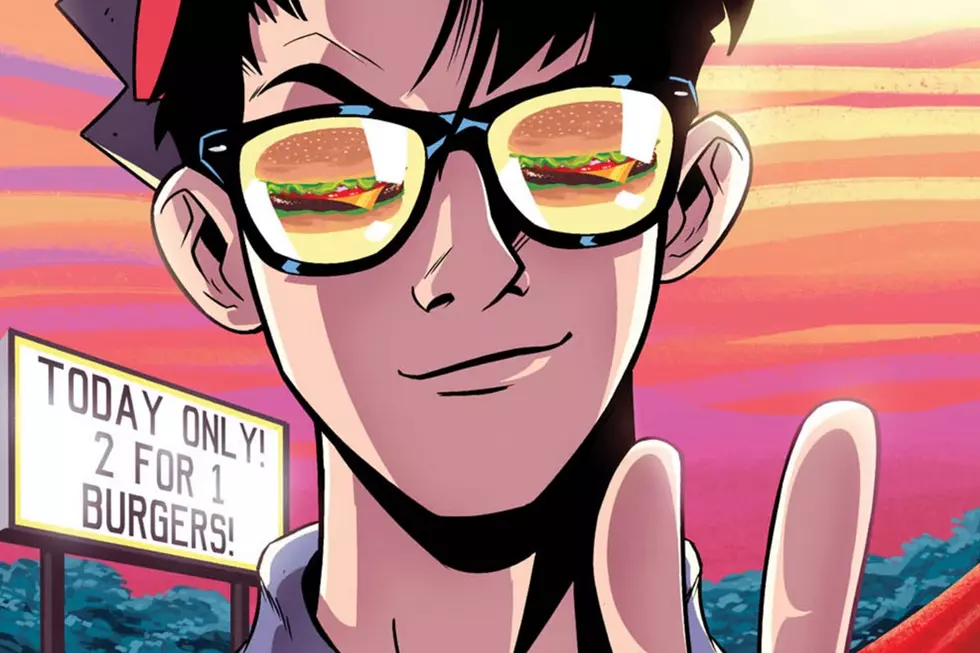![‘NonNonBa’ by Shigeru Mizuki Mixes Memoir and Fantasy into a Manga Classic [Review]](http://townsquare.media/site/622/files/2012/06/nonnonba.jpg?w=980&q=75)
‘NonNonBa’ by Shigeru Mizuki Mixes Memoir and Fantasy into a Manga Classic [Review]

If Shigeru Mizuki's NonNonBa were just the childhood memoir of an extremely talented and influential first-generation manga artist, it would be something well worth reading. If it were just a family drama set in the transitional, pre-war years of Japan, when the old, traditional ways were being replaced by the new ways of a more modern, industrialized world, it would be well worth reading. And if it were just a cataloging and collection of various species and characters of yokai (or Japanese spirit monsters), it would be well worth reading.
It's the fact that it is all three at once that makes NonNonBa a must-read, a classic work that is important as it is charming.The book is newly available in English thanks to Drawn and Quarterly, who previously published Mizuki's Onward Towards Our Noble Deaths, and it is named for the character around whom so much of the our young protagonist Gege's life seems to revolve.
"NonNonBa" is a contraction and corruption of NonNon Obaasan, the latter Japanese for grandmother and the former the title given to people who served Buddha. Her profession, mentioned in passing, is that of a "prayer hand," someone who made their living praying for those who were ill to get better, although she also worked as a housekeeper for Gege's family and others in their neighborhood.
Her role in his life, however, was as his unofficial guide to the spirit world, which, in the rural Sakaiminato of the 1930s as seen through a child's eyes, overlapped and permeated the real world in the same way that the fairy world intersected and often pierced the folk experience of the British isles in the 18th, 19th and early 20th centuries. No one young Gege knew had ever been on an elevator, or eaten a doughnut -- not until he and his brothers take a 12-mile journey to taste their first one, anyway -- and word of a train that ran under the ground in Tokyo was dismissed as simply too fantastic to believe.
In such a setting, under such circumstances, are ghosts and demons really such bizarre things for a child to believe in?
The devoutly religious and highly superstitious NonNonBa, born in the previous century, knows all of the yokai, and all about them -- their names, their habits, how not to anger them, what to do if you do anger them -- and she shares her knowledge with Gege. And even before growing up to be a professional and famous manga artist, Gege shared that knowledge with others, in little stories he writes and draws and passes around to his friends and family to read.

The book, a 400+ page doorstop, is broken into chapters, many of which are devoted to particular episodes involving various yokai: Zauki-Hakari, Otoroshi, Mr. Sticky, The Wart Yokai, Akaname the Dirt-Licker, Nekomata, The Hungry Ghosts, Slippery Lads, the Suiko/Water Tiger and The Waargh (a ghost so named for its cry of "Waargh!")
Mizuki rather ingeniously grants his yokai characters an ambiguous, equivocal degree of reality within the story. Are they real, or do they just exist in the imaginations of NonNonBa, Gege and other characters? Mizuki shows the reader the yokai, whereas the characters almost never see them with their own eyes -- with one, climactic exception which nevertheless is somewhat uncertain in nature -- but rather feel them and their effects.
For example, when NonNonBa and Gege cross paths with Mr. Sticky, an invisible yokai who follows travelers at night, the sound of his footsteps echoing behind them, Mizuki designs the creature for us to see, but the characters never have that opportunity. Others appear to Gege in his dreams or his sometimes fevered imagination, or appear in stories being recounted to him.
While the stories featuring the yokai are often somewhat standalone and episodic, NonNonBa is a graphic novel in the truest sense of the word (even though its 1977 creation predates the popular usage of that term by years), as young Gege comes of age and we see the various struggles of his family, and a few even more unfortunate girls who enter and leave our hero's life suddenly.

It seems somewhat redundant to note that Mizuki's art features cartoony characters in a highly realistically rendered environment, as it is manga, after all, and that's one of the signifiers that differentiates Japanese comics from those of other countries, but the distance of the gulf between the cartoonishness of the characters and the realism of the environment.

Mizuki's humans are as cartoonish as the characters in your average American newspaper gag strip (some barely even look human), and their emotions are similarly outsized, as they go cross-eyed with fear, exhale little clouds through their nostrils and sweat like sprinkler heads. The yokai themselves are richly varied in design, with some as simple as a little black cloud with staring white eyes and others looking as if they were pulled straight from classical Japanese art.
In that respect, the way they are drawn reflects their nature within the narrative.

Given his subject matter and skill at relating it, it's little wonder that Mizuki is regarded as a cultural treasure in Japan, having won just about every award a manga-ka or Japanese citizen can win and having been named to the Japanese Society of Cultural Anthropology. His hometown of Sakaiminato has a street decorated with over 100 bronze statues of his yokai characters and a museum. And while awards and statues are nice, there's no better monument to Mizuki than the comics he made. Comics like this one.
NonNonBa is on sale now in finer comics shops, book stores and directly from Drawn and Quarterly.
More From ComicsAlliance
![Brilliant Art, Tremendous Stories and Daring Creators: The 2016 Eisner Award Winners [SDCC 2016]](http://townsquare.media/site/622/files/2016/07/eisner2016.jpg?w=980&q=75)








